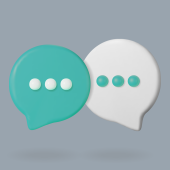“We are what we repeatedly do. Excellence, then, is not an act, but a habit.”
- Philosopher Will Durant paraphrasing Aristotle
Atomic Habits author James Clear acknowledged that while we may be motivated to start a habit, we will only stick with the habit if it becomes part of our identity. To change our routines, we need to start believing new things about ourselves and build identity-based habits.
Both Clear and Tiny Habits author B.J Fogg agree — making meaningful changes to our lives requires focusing on small daily improvements rather than aiming for massive action.
Given our natural tendency to act out of habit, Shawn Achor cites William James’ idea that the key to sustaining positive change is turning a desired action into a habit so it becomes automatic — without effort, thought, or choice. Habits are like financial capital — forming one today is an investment that will automatically give out returns for years to come.
Whether we want to increase our daily meditation, exercise more, reduce our social media use or negative self-talk – we need to start by creating small and consistent actions and routines.
The science of habits
James said that if we want to create lasting change we should “make our nervous system our ally instead of our enemy.”
The basal ganglia are structures in the brain primarily responsible for motor control, motor learning, cognition, emotions, and executive functions and actions. Certain habits appear to be formed through two basal ganglia pathways – the associative and the automatic. The associative pathway consciously collects information needed for reaching goals like staying warm or finding food, and the automatic pathway takes these lessons and includes them in a repertoire of stored habits.
Neuroscientists at the Massachusetts Institute of Technology (MIT) found that when engaged in a habitual routine (brushing one’s teeth), certain neurons in the basal ganglia activated at the beginning and the end of the routine but were quiet during the routine.
New York Times business writer Charles Duhigg, author of The Power of Habit, noted that once an action becomes automatic, the decision-making part of the brain goes “into a sleep mode of sorts.” This is why it’s easy while driving or parallel parking to completely focus on something else like the radio or a conversation.
Repeating habits leads to clear physical changes in the brain – commonly known as Hebb’s law: “Neutrons that fire together wire together.” The stronger the link, the faster the message can travel down that pathway making the action seem second nature or automatic.
8 tips (and examples) for creating healthy habits
1. Add a new action to a time and location
Mediating for one minute at 7 am in the kitchen.
2. Pair an action you want to do with one you need to do
Doing 10 squats before checking Instagram.
3. Do something you enjoy immediately before the new habit to link the emotion
Taking three breaths and smiling before petting the dog. This positive loop should create the same positive emotion if we take three breaths and smile after a stressful meeting.
4. Habit stacking (attach a new habit to a current one)
Fogg started doing two pushups every time he went to the bathroom (day or night) and, wanting to get more sleep, put his phone on airplane mode at 7 pm, ate dinner an hour earlier, installed blackout blinds, did a 15-minute wind-down before bed and wrote down all of his anxieties before going to sleep.
5. Choose a habit you want to do
Not something we think we should do as we will otherwise blame ourselves when we don’t do it and give up.
6. Make it a tiny habit
Meditating daily for two minutes rather than 30. The positive emotion of success will wire that habit into the brain. The benefit of making the habit tiny is that on days when “you’re sick… or stressed out… or distracted… even on the worst of days you can still get it done.”
7. Prime the environment to make the activity easier
Putting your gym clothes and shoes out the night before to make it easier to get up in the morning and exercise.
8. Create rituals
Former Disney CEO Bob Iger works out as soon as he wakes up, Leonardo Da Vinci had a lifelong habit of journaling, and American dancer/choreographer Twyla Tharps’ morning ritual for creativity and productivity started at 5:30 am to go to her workout: “The moment I tell the driver where to go I have completed the ritual.”
Habits are formed through a simple loop
- A cue triggering your brain to initiate an action. Your phone buzzes with a new text message.
- A craving associated with high levels of dopamine. Wanting to read the message.
- A response — the actual thought or action. Grabbing your phone to read the message.
- A reward that satisfies our cravings and teaches us that our actions are worth remembering. Reading the message.
3 tips to reduce negative habits
Being mindful of our negative habits is the first step. Next:
1. Change your environment
Duhigg recommends using vacations to break habits: "You'll put your shoes on in a different order without paying any attention to it," he says, "because once the cues change, patterns are broken up."
2. Remove triggers
If snacking is a problem, try reducing or eliminating snacks in the house or at work. If you want to stop checking your phone first thing in the morning, leave it outside the bedroom when you go to sleep.
3. Express gratitude
If we focus on what we lack, we will miss what we are actually experiencing.
Get back on track
Inevitably, we will slip up. Tim Ferriss’ tips for getting back on track include expecting to get knocked off track, having a plan to get back on track, and listening to Sam Harris’ Start Again meditation to let go and start again.
Creating new habits and reducing habits that no longer serve us is an opportunity to include activities and actions that are positive. Don’t forget positivity also requires work and repetition.
“Positivity is like a muscle: keep exercising it, and it becomes a habit.”
- Natalie Massene, Net-a-Porter founder




